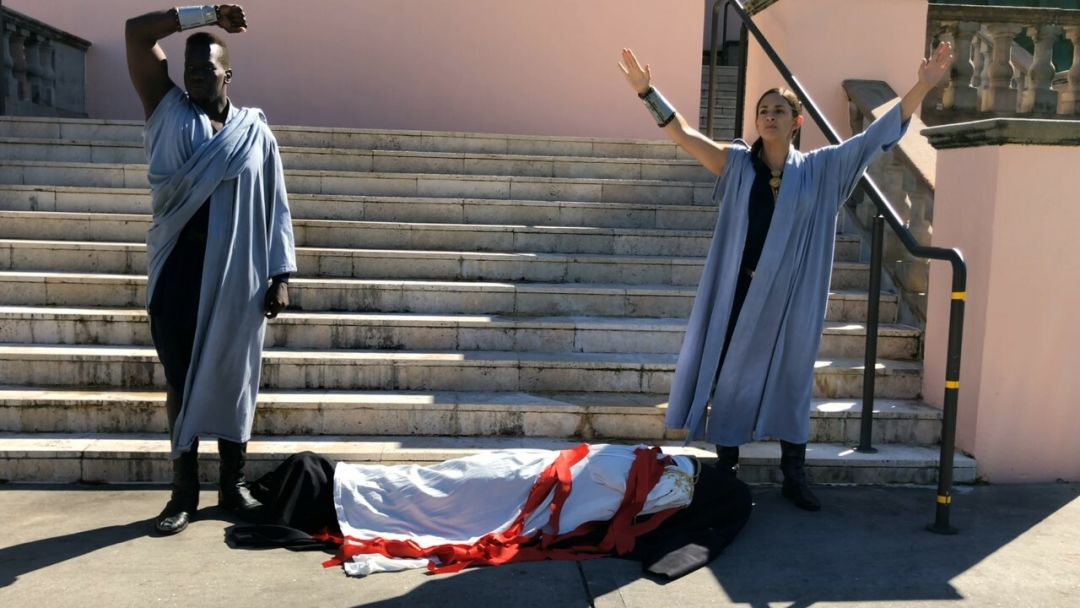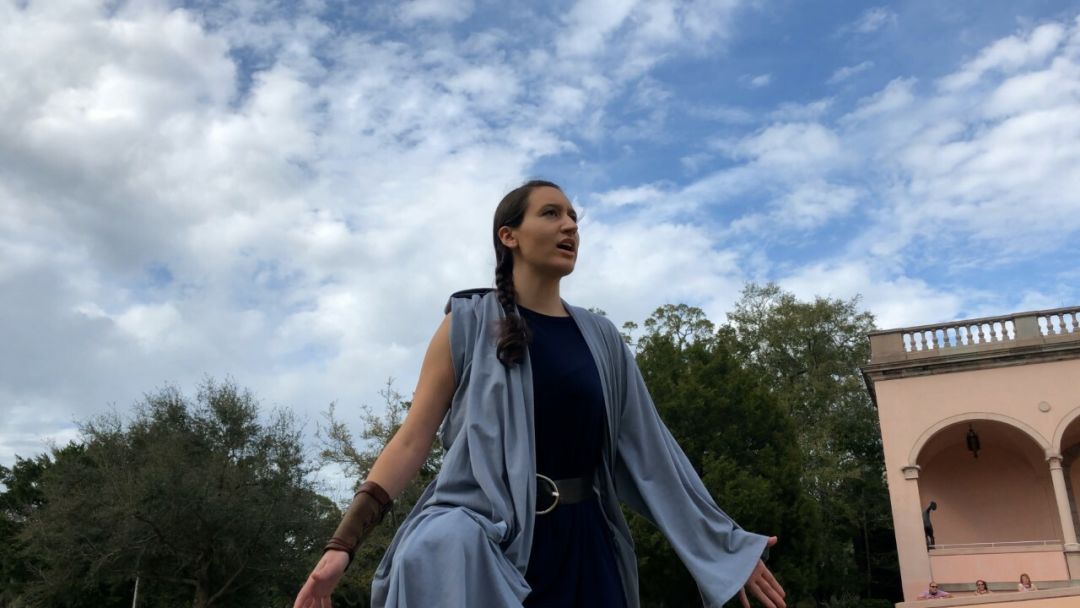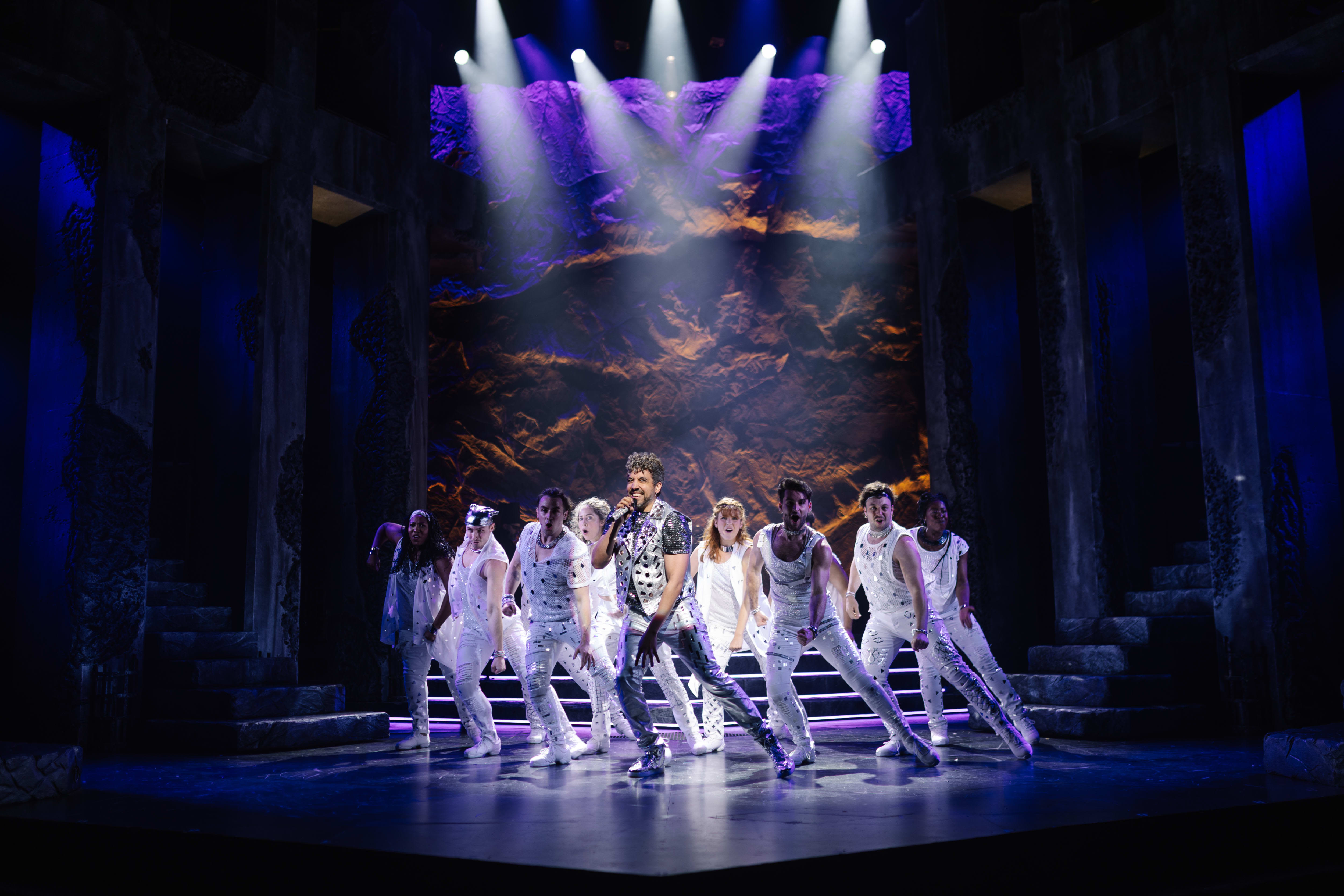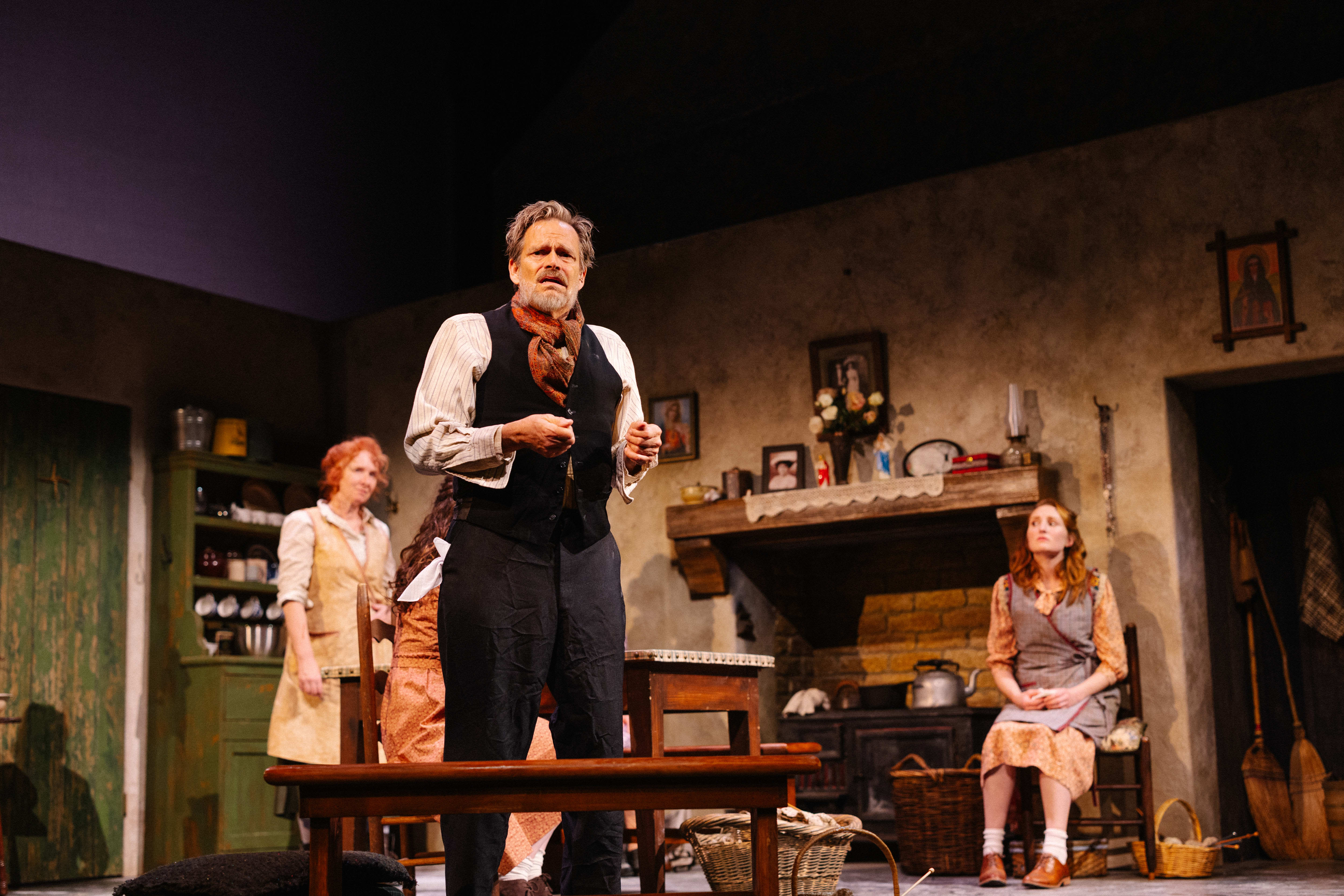FSU/Asolo Conservatory's Julius Caesar Is a Very 2021 Production

Daniel Ajak, Merri Rashoyan (on ground) and Charlotte Foster in the FSU/Asolo Conservatory's Julius Caesar.
It’s challenging enough to teach FSU/Asolo Conservatory acting students to perform Shakespeare. Throw in a pandemic that makes it impossible for the cast to appear onstage together—even outdoors, as originally planned for its spring production of Julius Caesar—and the challenges multiply.
With the help of cameras, projections, green screens, masks and more, the production team behind the Conservatory’s presentation of the classic (with a title shortened to just Caesar on the video, although it’s still being promoted with Julius included), has nevertheless pulled together to meet those challenges as best they can. Under the direction of Jonathan Epstein, there are changes to the traditional script. As might be expected, some minor characters have been eliminated to accommodate a smaller cast of 13 second-year students. But beyond that, Epstein has also made some gender changes from the original.
Caesar, for example, is here portrayed by a woman (Merri Rashoyan) with a husband named Calpurnius (Ptah Garvin) rather than wife Calpurnia. (Calpurnius is also allotted some of the dialogue of the missing Octavian, Caesar’s eventual heir, here.) But the bigger change comes in how Epstein has divided key roles into male/female/brother/sister pairs. Instead of Marcus Junius Brutus as the reluctant co-conspirator, we have Marcus (Daniel Ajak) and Julia (Charlotte Foster), sometimes referred to as “the Brutii.” Instead of merely Mark Antony, that famous friend and orator, we have Antonius (Derek Sikkema) and Antonia (Paige Klopfenstein). And instead of that lean and hungry Cassius as one individual, we now have Caius Cassius (Giovanni Rincon) and Tertia Cassius (Dayna Palya). So their speeches are divided up accordingly.
It can feel a bit confusing at first, but after the first 15 minutes or so of the video, you get used to it. And the Conservatory team likewise gets creative with the settings in which they shot the socially distanced production. The steps of a portion of the Ringling Museum sub for the public space of ancient Rome, where characters like Caesar and Mark Antony declaim before the crowds (a small ensemble, wearing plastic shield helmets). A part of Selby Gardens appears in the second half of the play, when the warring factions after the assassination of Caesar prepare for battle.

Emily Bohn as Messala in Julius Caesar.
In other scenes, there are virtual backdrops to take us to a character’s home or, near the climax, a battlefield that looks far below where the actors are. Some of these are more successful than others. There was a time, early on in the piece, when watching two or three actors “speak” to each other while so obviously not in the same room, felt like a Saturday Night Live sketch about our current state of pandemic-enforced technology use.
But there’s no question the actors are getting some useful training here, if not perhaps what they expected when they first entered the Conservatory. The close-ups employed during the assassination scene give many of them a chance to convey their internal struggles in a way they could only approximate onstage. And often, they do overcome the difficulties posed by working in separate spaces, still communicating to us their timeless love/hate/passions.
Rashoyan is a convincing Caesar, vacillating between honor and love of adulation before those easily swayed crowds. Garrick Sigl has some fun (yes, it seems like fun) as the rather effeminate, snarky Casca. Palya’s Tertia and Foster’s Julia Brutus are women of strength one can believe as noble Romans. And just about everyone in the cast does a good job reciting some of those most famous and quotable Shakespearean lines.
As with everything right now, this Julius Caesar is not like what came before. But maybe it’s a sign of things to come. It’s available for home streaming through April 26; go to asolorep.org for more.



